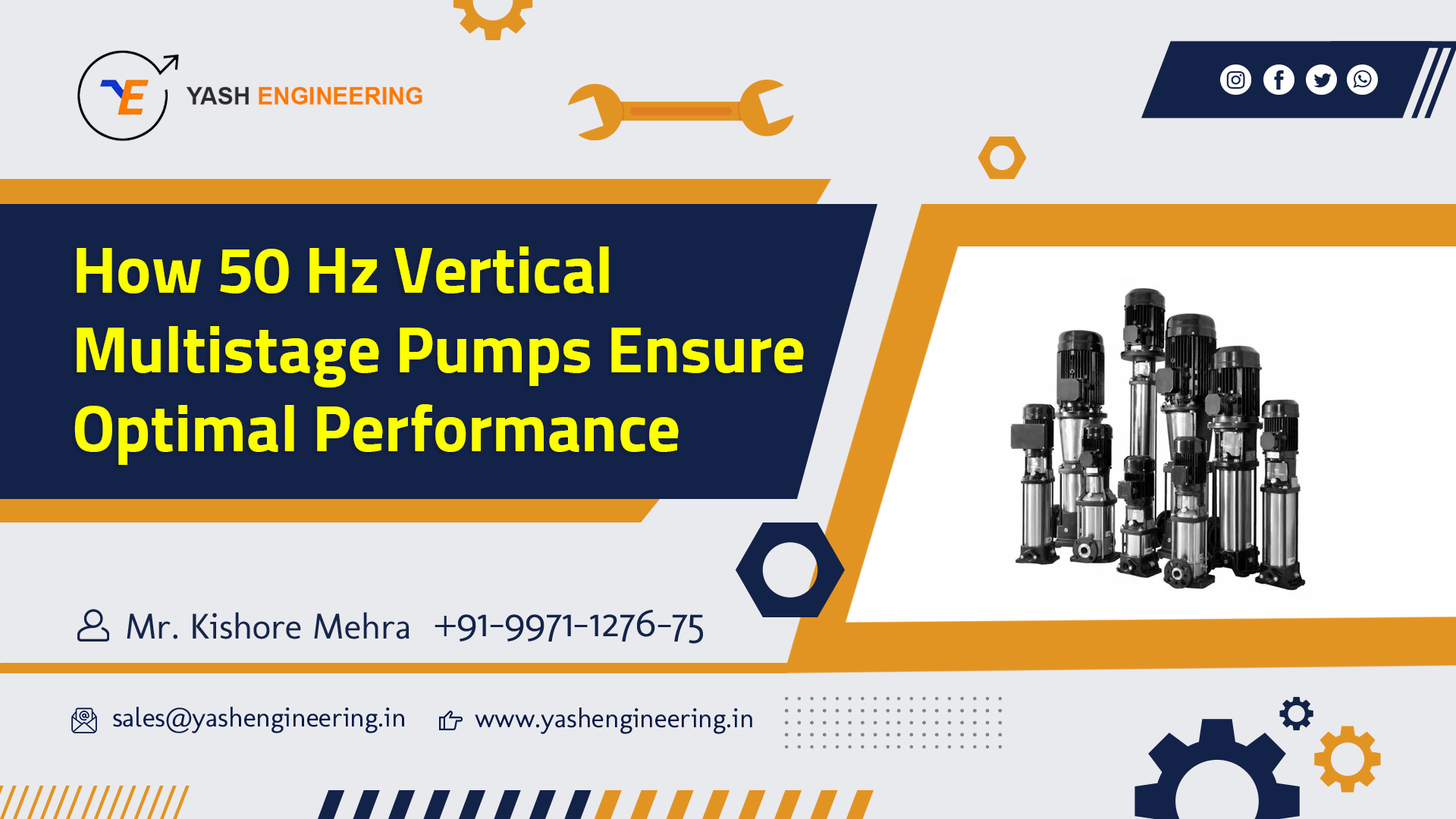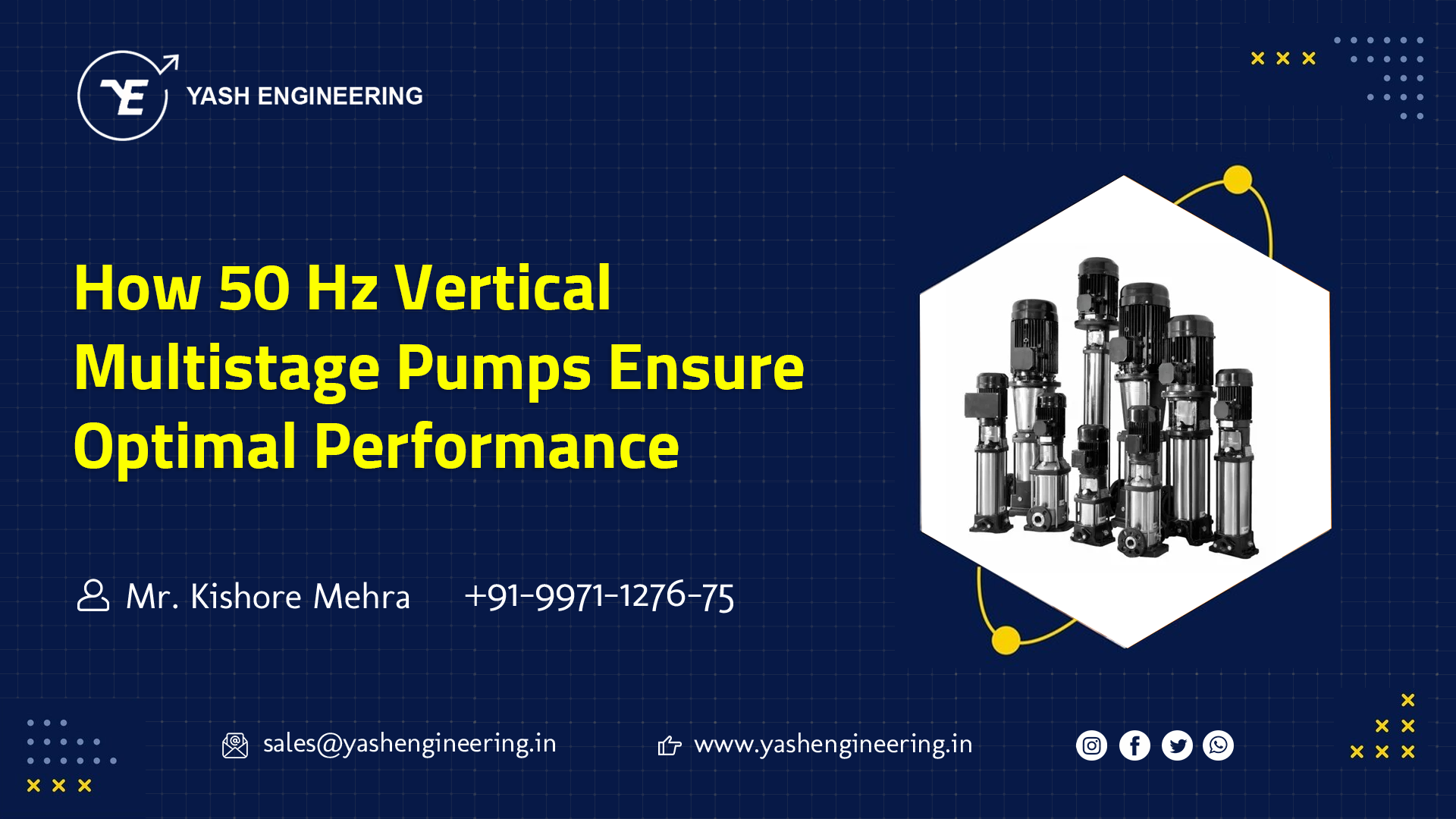Contents
- 1 Understanding 50 Hz Vertical Multistage Pumps
- 2 1. Energy Efficiency: Optimizing Power Consumption
- 3 2. High Pressure Capabilities for Versatile Applications
- 4 3. Space-Saving Design: Perfect for Tight Installations
- 5 4. Durability and Reliability: Built to Last
- 6 5. Quiet and Smooth Operation
- 7 6. Cost-Effectiveness Over Time
- 8 7. Eco-Friendly Performance
- 9 Conclusion: Why Choose 50 Hz Vertical Multistage Pumps?
In the world of industrial pumps, efficiency and reliability are paramount. Whether you’re working in manufacturing, water treatment, or HVAC systems, choosing the right pump for the job is critical to ensuring optimal performance. Among the various types of pumps available, 50 Hz vertical multistage pumps stand out as a preferred choice in numerous applications. But what exactly makes these pumps so effective? In this blog post, we’ll explore how 50 Hz vertical multistage pumps ensure optimal performance, what sets them apart, and why they are so widely used in different industries.
Understanding 50 Hz Vertical Multistage Pumps
Before diving into their performance, let’s first break down what 50 Hz vertical multistage pumps are.
-
50 Hz: This refers to the frequency of the electrical power supply. In many regions around the world, particularly in Europe, Asia, and parts of Africa, electricity is supplied at a frequency of 50 Hz. This specification ensures that the pump operates optimally with the local electrical infrastructure, ensuring compatibility and efficient energy use.
-
Vertical: Unlike horizontal pumps, vertical multistage pumps have a vertical shaft and are designed to be placed upright. This design helps save space and provides advantages in applications where space is at a premium, such as in high-rise buildings or tight industrial settings.
-
Multistage: The term “multistage” refers to the pump’s construction, where several impellers (or stages) are arranged in series. This allows the pump to generate higher pressures than single-stage pumps. The more stages a pump has, the higher its pressure capability. Each stage increases the total head, making these pumps ideal for high-pressure applications like boosting water or transferring fluids over long distances.
Together, 50 Hz vertical multistage pumps offer a combination of energy efficiency, space-saving design, and high performance. Now, let’s take a deeper look at why these pumps ensure optimal performance.
1. Energy Efficiency: Optimizing Power Consumption
One of the key factors driving the popularity of 50 Hz vertical multistage pumps is their energy efficiency. In a world where energy costs are rising, and sustainability is a key concern, these pumps help reduce power consumption while still delivering high performance.
-
Matching Electrical Frequency: As mentioned earlier, the 50 Hz frequency is standard in many regions, meaning the pump operates in harmony with the electrical grid. This reduces the likelihood of energy losses that might occur if a pump were designed for a different frequency.
-
Variable Flow Rates: Vertical multistage pumps are designed to handle varying flow rates, which can be adjusted depending on demand. This means they can operate at a lower flow when full capacity isn’t needed, thus saving energy.
-
High Efficiency Motors: These pumps are often equipped with high-efficiency motors that minimize electrical losses, ensuring that most of the energy used goes into the pump’s performance rather than being lost as heat.
2. High Pressure Capabilities for Versatile Applications
Multistage pumps are known for their ability to generate high pressure, which is a critical factor in a wide range of applications. The vertical configuration of these pumps further enhances their ability to handle high-pressure operations efficiently.
-
Increased Head: The design of 50 Hz vertical multistage pumps includes multiple impellers arranged in stages. As the fluid passes through each stage, its pressure is gradually increased, which allows the pump to handle higher heads than a single-stage pump would be able to. This is especially useful in systems that require water or other fluids to be moved over long distances or to elevated locations.
-
Boosting Systems: These pumps are commonly used in water supply and boosting systems, such as in municipal water systems, fire suppression systems, and large buildings, where consistent pressure is essential.
-
Dealing with High-Viscosity Fluids: Many 50 Hz vertical multistage pumps are designed to handle fluids with varying viscosities, making them suitable for industries like chemical processing and oil and gas, where fluids with higher viscosities need to be pumped at high pressures.
3. Space-Saving Design: Perfect for Tight Installations
The vertical design of these pumps is another feature that sets them apart. Space is a precious commodity in most industrial environments, and 50 Hz vertical multistage pumps are ideal for installations where space is limited.
-
Compact Footprint: Unlike horizontal pumps, which take up more floor space due to their wider design, vertical multistage pumps are built in an upright configuration, allowing for a much smaller installation footprint. This is particularly beneficial in tight spaces, such as in buildings with limited room for pump rooms or in high-rise applications.
-
Versatile Placement: Vertical pumps can be installed in smaller or more confined spaces while still maintaining high performance. This allows for greater flexibility in how the pump system is integrated into existing infrastructure.
4. Durability and Reliability: Built to Last
Reliability is a top priority in any pump system. Industrial pumps often face harsh conditions, including high operating pressures, temperatures, and exposure to chemicals. 50 Hz vertical multistage pumps are designed to withstand these challenges, ensuring longevity and dependable performance.
-
Corrosion Resistance: Many of these pumps are made from materials that resist corrosion, such as stainless steel or special alloys. This makes them well-suited for environments where the fluid being pumped may contain chemicals or other corrosive substances.
-
Sealing Technology: Vertical multistage pumps are equipped with high-quality seals that prevent leakage and maintain pressure integrity over time. This reduces maintenance requirements and ensures the pump operates smoothly without the risk of fluid loss or system failure.
-
Minimal Maintenance: The design of these pumps minimizes wear and tear on components, which translates into lower maintenance costs and less downtime for repairs.
5. Quiet and Smooth Operation
One of the less-discussed but equally important advantages of 50 Hz vertical multistage pumps is their ability to operate quietly and smoothly. In environments where noise can be a concern, such as in residential areas or in facilities where noise levels are strictly regulated, these pumps offer a significant advantage.
-
Low Vibration: The vertical configuration and high-quality construction of these pumps help reduce vibrations during operation. This results in quieter performance, which is essential in noise-sensitive environments.
-
Balanced Design: The stages are balanced in such a way that the pump operates with minimal mechanical stress, which not only reduces noise but also ensures smoother operation.
6. Cost-Effectiveness Over Time
While 50 Hz vertical multistage pumps may represent a larger upfront investment compared to other pump types, their long-term benefits far outweigh the initial cost.
-
Energy Savings: As mentioned earlier, these pumps are energy-efficient, meaning they help reduce operating costs over time. With lower energy consumption, businesses can enjoy significant savings on utility bills.
-
Long Lifespan: The durable materials and design features ensure that these pumps have a long operational life, minimizing the need for frequent replacements or costly repairs.
-
Reduced Maintenance Costs: Because these pumps are built to withstand wear and tear, the need for maintenance is greatly reduced, contributing to cost savings over the long run.
7. Eco-Friendly Performance
In today’s environmentally conscious world, sustainability plays a significant role in the selection of industrial equipment. 50 Hz vertical multistage pumps are often engineered with eco-friendly features that reduce their environmental impact.
-
Low Power Consumption: The efficiency of these pumps means they use less power, which not only lowers energy bills but also reduces the carbon footprint of the facility.
-
Recyclable Materials: Many of these pumps are made from materials that are easily recyclable, contributing to a circular economy and reducing waste.
Conclusion: Why Choose 50 Hz Vertical Multistage Pumps?
In summary, 50 Hz vertical multistage pumps ensure optimal performance in a variety of demanding applications due to their energy efficiency, high pressure capabilities, compact design, durability, and smooth operation. Whether you’re looking to boost water pressure in a high-rise building, manage chemical fluids in a processing plant, or ensure reliable water distribution in an industrial system, these pumps are an excellent choice.
Their space-saving design, long-lasting durability, and cost-effectiveness make them an investment that pays off over time. And with the added benefit of being compatible with the 50 Hz frequency, they offer seamless integration into global electrical grids, ensuring that they operate at peak efficiency.
If you’re in need of a reliable, high-performing pump, 50 Hz vertical multistage pumps offer everything you need to meet the challenges of your industrial applications while ensuring optimal performance for years to come.


